Introduction
Even as hundreds of new drafting games have come out, 7 Wonders still stands strong as one of best of them (though, I’m still debating if 7 Wonders Duel beats the original or not). 7 Wonders strategy is just so deep, and so satisfying to pick apart.
After I had conversations about what games people want to read strategy about, this is one that kept coming up, even though it’s almost 10 years old.
Before we get into it, I should mention this guide has been proofread by the top ranked player on Board Game Arena (Iguana), who has over 800 victories and an insane 84% winrate. So shout out to Iguana, thanks for proofreading.
Drafting Strategy
In the first age, your first priority is to get your resources set up. Try not to spend gold on buying resources from opponents in the first age, unless you have a trading post. That gold is usually better saved for cards with a gold cost. Ending age 1 with some money is always a good idea. Sometimes, you’ll even want to trash the final card of age 1 for money so you can be sure to have enough money to pick up whatever cards you want from the first hand of age 2.
In the second age, you’ll want to get enough resources/goods to finish your wonder and buy the guilds/third age cards you’ll be hoping to get. You’ll also want points, but every game is different for how you’ll want to prioritize doing those two things.
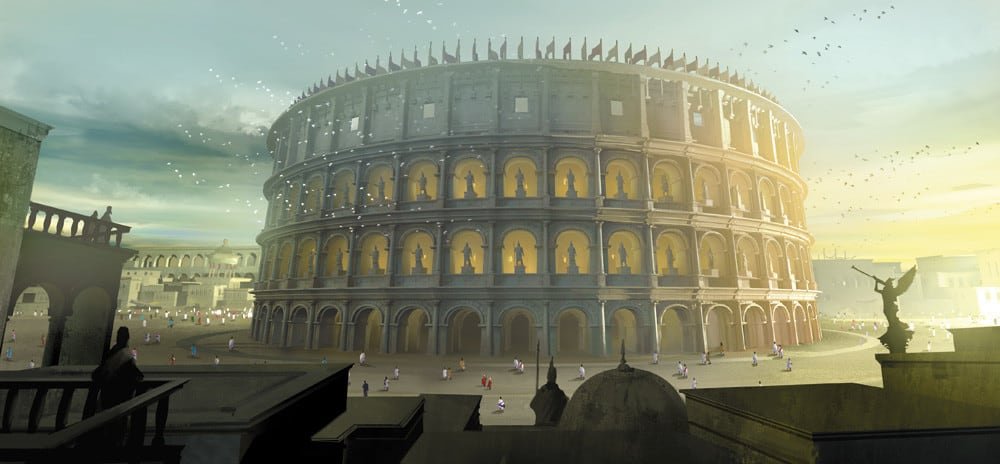
Resources and Manufactured Goods
What sets this game apart from most other drafting games today, and every drafting game that came before it, is resources. Cards in this game have a cost.
So, in order to succeed in the game, you must have access to enough resources to build the cards you want, which get quite expensive by the third age.
Now depending on the player count, you’ll want to be more or less aggressive with how you take resource cards: in a 3 or 7 player game, there will be relatively fewer resource cards per player, while 4, 5, and 6 player games will have plenty. That means you must pick up resources more aggressively in 3 and 7 player games or you risk not getting any.
Inversely, manufactured goods are at their most plentiful in a 3 player and 6-7 player games, while being relatively more scare in 4-5 player games.
Generally, you’ll want to have access to at least one of every resource, but that doesn’t mean your civilization has to be able to produce every single resource. If an adjacent player has a resource that you don’t have, its okay just to plan on paying them for it if you need it if you don’t think you’ll need too much of it.
But more specifically, you’ll want to take the resources that build into the cards you’ll want, but no more than that. For example, if you’re in a heavy military strategy, you’ll have very little use of manufactured goods, which never show up on military cards (with the exception of a single third age military card that costs 1 textile).
Between the first two ages, you’ll generally want to get 6-7 resource cards (between the brown, grey, and the yellow cards that produce/discount resources) total. 3-4 in the first age, and 3-4 in the second age.
What resources you want will be determined by a few different things:
- What resources you’ll need to build your wonder.
- What resources you’ll need to draft the cards important to your strategy.
- What resources your opponents have available.
But no matter what strategy you’re doing or what resources you need for your wonder, your first pick priority should usually be taking any of the first age resources that make two different resources. If you’re going for science, it’s far less important to take double resource cards, especially if taking it means passing a science card you can afford, but still a great idea to take them even when you’re going for science. These cards are great, and should almost always all be taken after the second pick.
The distribution of resource producing cards is always even at every player count, but the distribution of costs on the cards are not even.
- Wood and ore show up most often in card costs, most frequently requiring only one of that resource.
- Stone and clay appear on fewer cards, but often in multiples of 3.
Otherwise, what resources you want will vary a lot. I’ll discuss specific resources more in each section that goes into more detail about each strategy.
A Note on foregoing resources and relying on Coupons/Chains
In theory, prioritizing cards with coupons sounds like a great plan. By relying on coupons, you get to take far more valuable cards in the first and second round over resources.
There are two reasons why relying on coupons is a dangerous proposition: first, you aren’t guaranteed to see the cards you got the coupon for. Second, guilds don’t get coupons, and neither do the most valuable blue cards, so you’re giving up on ever getting the best cards, and often even your wonder. Essentially, this is a trade off: you are trading more points in the first round for fewer points in the third. Typically, this isn’t a winning proposition.
However, it’s always important to consider the effects of the coupon anyways, even when you’re not going all in on them.

For example, the Aqueduct is a great age 2 card, but it’s quite difficult to buy, while the other age 2 blue cards are all considerably easier to build. With that in mind, prioritizing the bath higher than other blue cards makes sense, because otherwise you might never be able to build the Aqueduct otherwise.
Science is a bit of an exception, as science cards get the best coupons, but I’ll discuss that more in the science section.
The Role of Money
The first lesson players often learn about 7 Wonders strategy is that money will not win you the game. No one ever wins with money. The points that money scores is a consolation prize for new players who get greedy horde it.
Think of money as simply another way to get resources. You should, for the most part, spend all your money as soon as you want to get something you otherwise couldn’t afford. In the first age, you might want to hold onto a few coins so you can afford the cards you get at the beginning of the second age, but otherwise, spend it as soon as you have the opportunity to. In a typical game, money will naturally flow your way if you have resources your neighbors don’t, so don’t worry too much about it.
When buying resources that both your neighbors have, it mostly doesn’t matter which neighbor you buy from. The biggest deciding factor is how much money they currently have. Typically, you want to buy from the richer neighbor (and I’ll note, richness has no correlation with who’s winning). If one neighbor has no coins, and the other has 4 coins, give your money to the richer neighbor. Why? The first two coins are much better than the 6th coin is. Having 2 coins means you can already afford any resource your neighbors have, but having 0 means you’re limited by what you own personally.
If both neighbors are equally rich, consider these:
- Buy from the player with more resources, as they won’t stay broke for long.
- Buy from the player who’s doing worse, so you don’t want to prop up your competition.
- Don’t buy from a player going all in for science, because part of what balances how high scoring science can be, is how much they struggle to get non-science cards in the third age. Money helps them buy guilds and blue cards.
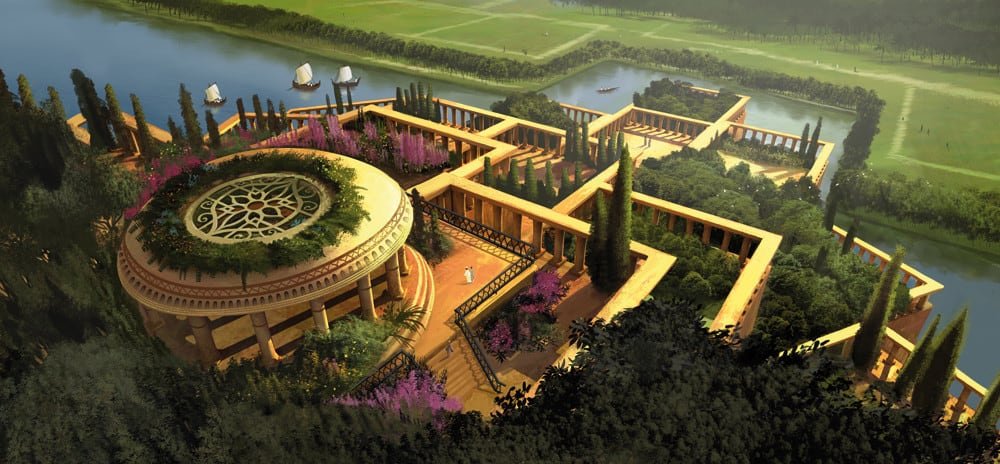
Science
In the grand scope of 7 Wonders strategy, science often has fairly unique play patterns: first, how its mechanics interacts with the social dynamics of the actual game can vary widly. For example, in a fairly inexperienced group of players, if science just won the last game, expect everyone at the table to hate-draft science. Actually, science gets hate-drafted pretty exclusively in inexperienced groups, (from what I’ve seen at least) but in competitive play, players only hate against the science player if they see an especially good start (and sometimes not even then, as hate-drafting can be hard when you want a card more than you want a card your opponent has).
When deciding if you want to go for science or not, the most important thing is the age. You want to get your first science card early in the first age. The second thing to consider is how much access to manufactured goods you have.
Because of this, any of the wonders that start with a manufactured good is well suited to go for science, as you’re free to start buying science cards right off the back.
Resources
All of the first age science cards cost 1 manufactured good to build, and all the third age cards cost two manufactured goods (with the exception of the School).
When you want to go for science, you need to obtain one of each manufactured goods, or at the very least have 2/3 of the manufactured goods, and be able to purchase the third from a neighbor.
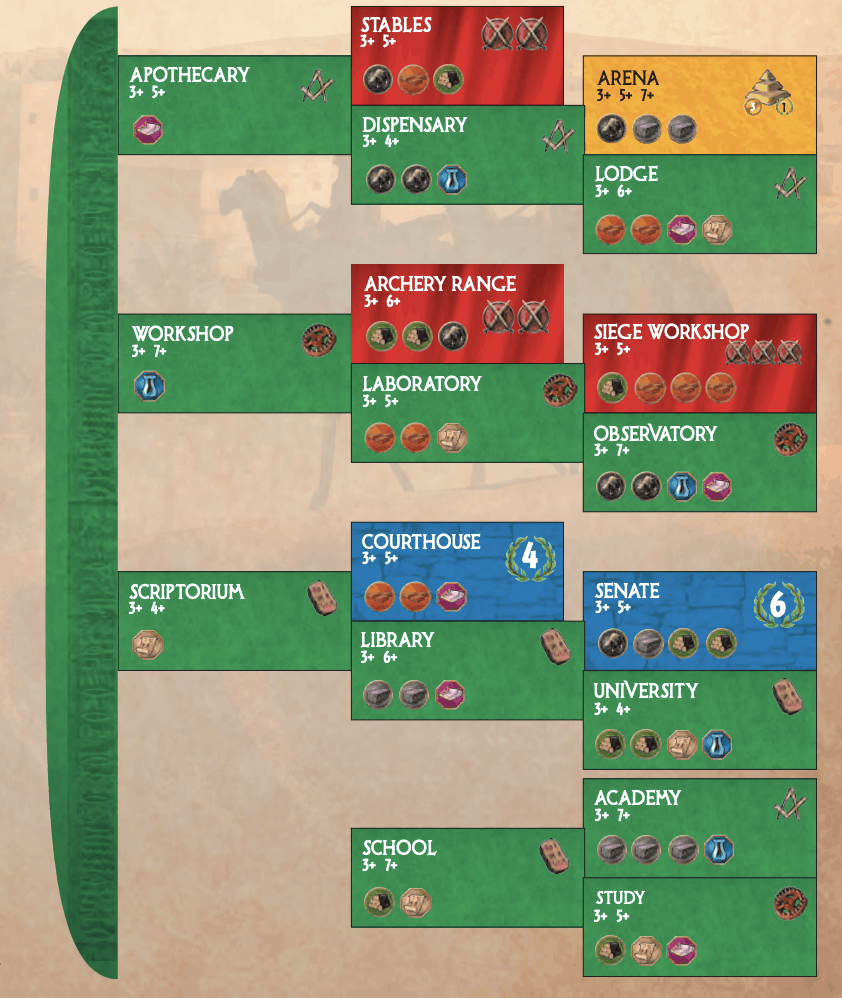
One thing to watch out for. When you get the Scriptorium and the Workshop in the first age, you’ll need to make sure you have access to 2 ore by the second age (so you can afford the Dispensary). There is a resource you’ll need two of no matter what if you only managed to get 2/3 science symbols in age 1. If you want to be competitive, this is a great thing to memorize right now.
And it’s always a good idea to go for tablets, as both the school and the scriptorium have more powerful coupons. Getting a free Senate is great, and the School is the only science card that upgrades to non-matching symbols.
Should I go for matching symbols or sets of each symbol?
Well first, let’s look at how each scores. You score 7 points for a set of each symbol, and each card matching set scores points equal to the number of cards in the set. So lets look at how that scales:
Science scoring for matching sets
| # of Science Cards | Points/Card | Total Points |
| 1 | 1 | 1 |
| 2 | 2 | 4 |
| 3 | 3 | 9 |
| 4 | 4 | 16 |
| 5 * | 5 | 25 |
| 6 * | 6 | 36 |
* Getting these require the Science Guild or the Babylon Wonder
Science Scoring for sets of each symbol
| # of Science Cards | Points/card | Total Points |
| 1 | 1 | 1 |
| 2 | 1 | 2 |
| 3 | 3.3 | 10 – complete set |
| 4 * | 3.25 | 13 |
| 5 * | 3.2 | 16 |
| 6 | 4.3 | 26 – complete set |
| 7 | 4.4 | 31 |
| 8 | 4.5 | 36 |
| 9 | 5.3 | 48 – complete set |
| 10 | 5.5 | 55 |
| 11 | 5.6 | 62 |
| 12 | 6.3 | 76 – complete set |
Now, when choosing between building sets of matching symbols and sets of each symbol, there’s a few things to consider:
- Matching sets score well, but peak before you get a ton of points with it. You can get at most 16 points total unless you get the Science Guild or have the Babylon wonder.
- You can’t run away with the game from a matching set of symbols, as the players you’re playing with can pretty easily take all of that symbol you’re relying on. Getting more than 3 of a single symbol is a bit of a pipe dream.
- A set of 1 of each symbol scores higher than a matching set of 3 does.
- If you go into science hard, you definitely want to go for matching sets, as the scoring potential is just much higher.
- If you go for a set of each symbol, you still score for matching symbols so you get the best of both worlds.
Usually, the goal should be to go for matching sets, but you do sometimes play games where you end up with many of a single symbol. Though, once you have two full sets, every science card is worthwhile, and you’ll probably should consider taking all of them.
In the first age, the science cards are big scorers, usually outscoring the blue cards (given you get more science cards). When playing science, you want to get 3 science cards before they’re worthwhile (Blue cards will always outscore science if you fail to get 3 of them). If you get 3 of a single science symbol, that’s 9 points, or if you get 1 of each science symbol, that’s 10 points.
Therefore, when going for science, you want to aim to get at least 2 science cards in the first age and the third card in the second age. If you only manage to get a single science card in the first age, it’s reasonable to drop it as a lost cause, but you may want to complete your set of three in the second age if you don’t find better options, as 3 points per card is only a little under average in the second age.
But unless you have a lot of competition for science, aiming for a single set is aiming low though. In the average game where you decide to go for science, you should aim to complete at least two full sets of each science symbol. Completing 3 full sets isn’t aiming too high either.
Distribution
- There will be fewer gears in 4 and 6 player games.
- The slabs have the best upgrade paths most of the time.
- Slabs will also be the most frequently showing symbol At 4 players.

Military
Military is one of the most misunderstood parts of the game. New players frequently will buy 8+ military cards, and then realize that they only got 18 points while the rest of the players got 50+ points.
Military scores well when your neighbors don’t want to compete with you, and it scores quite poorly when you waste too many cards on it, because the number of points you can get from military is capped at 18 (2 from the first age, 6 from the second, and 10 from the third age).
A good outline for scoring military efficiently is this:
- Get two military cards age 1 (score 2 points)
- Get two more military cards age 2 (score 6 points)
- Get one military card in age 3 (score 18 total points)
18 points at the cost of 5 cards is 3.6 points per card, which is decent. However, if it’s a 3 player game, that changes everything, as all the points you score loses points for all your opponents, so you could count those negatives as points. That makes the above drafting strategy score about 5 points per card, which is spectacular. That’s twice as much as the average age 1 card!
How much your opponents perceive their chances to do well against your military determines how good military is. That means you want to take your military early (especially in ages 2 and 3), to signal to your opponents that you are going to stay ahead. You want to be ahead enough that they won’t want to bother, or so that you can hate draft their chances to compete if you get the chance. This is especially good in a 3 player game, where military is just ruthlessly effective.
In fact, it’s commonly said that you can’t win a 3 player game without military, and while not always true, you should probably always take military very highly in 3 player games.
I should note, military is a strategy that can fit into any other strategy. A resource light science strategy might struggle to do it, but if you have the resources and opportunity to build military, you should consider it, as military often has great payouts, especially when there is little interest in it from your neighbors.
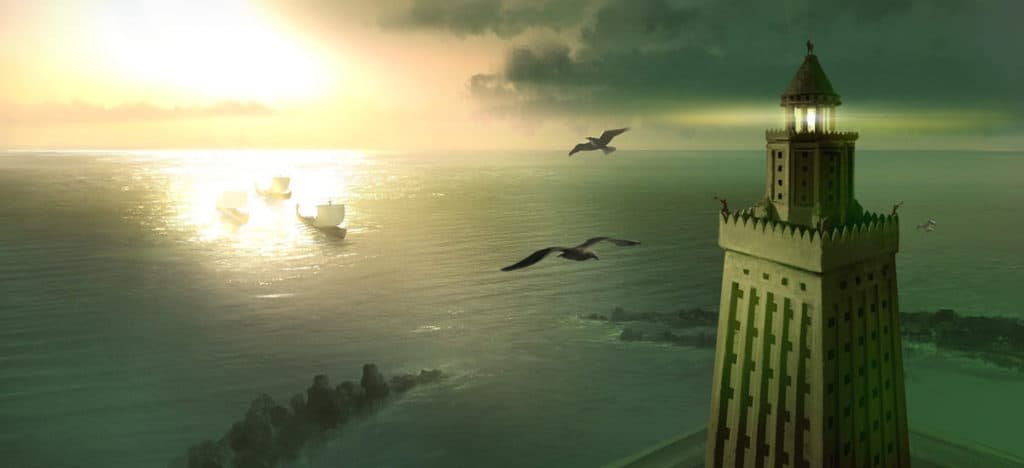
Civilization cards
The civilization cards are just good. However, the more of them you take, the fewer chances you have at the slightly higher scoring, but riskier scoring opportunities found in the military and science cards.
So when do you take blue cards? For the most part, once you’ve found a path forward, you take blue cards when you don’t need resources and you don’t have a higher scoring opportunity you should get over it.
There is a strategy that just builds as many blue cards as possible, and that’s certainly possible. In order to do this, there aren’t any resources in particular that you need, you need a little bit of them all. This is hard to go all in on, simply because other players can take and score off blue cards as easily as you can, so it can often feel like a losing proposition when your opponent’s start taking the blue cards early, since they know you’re not interested in science or military. Personally, I think you should take blue cards when they’re your best pick, but never be all in on them.
Economic Cards
Now, let’s talk about each yellow card, because unlike the other cards in the game, they all do different things.
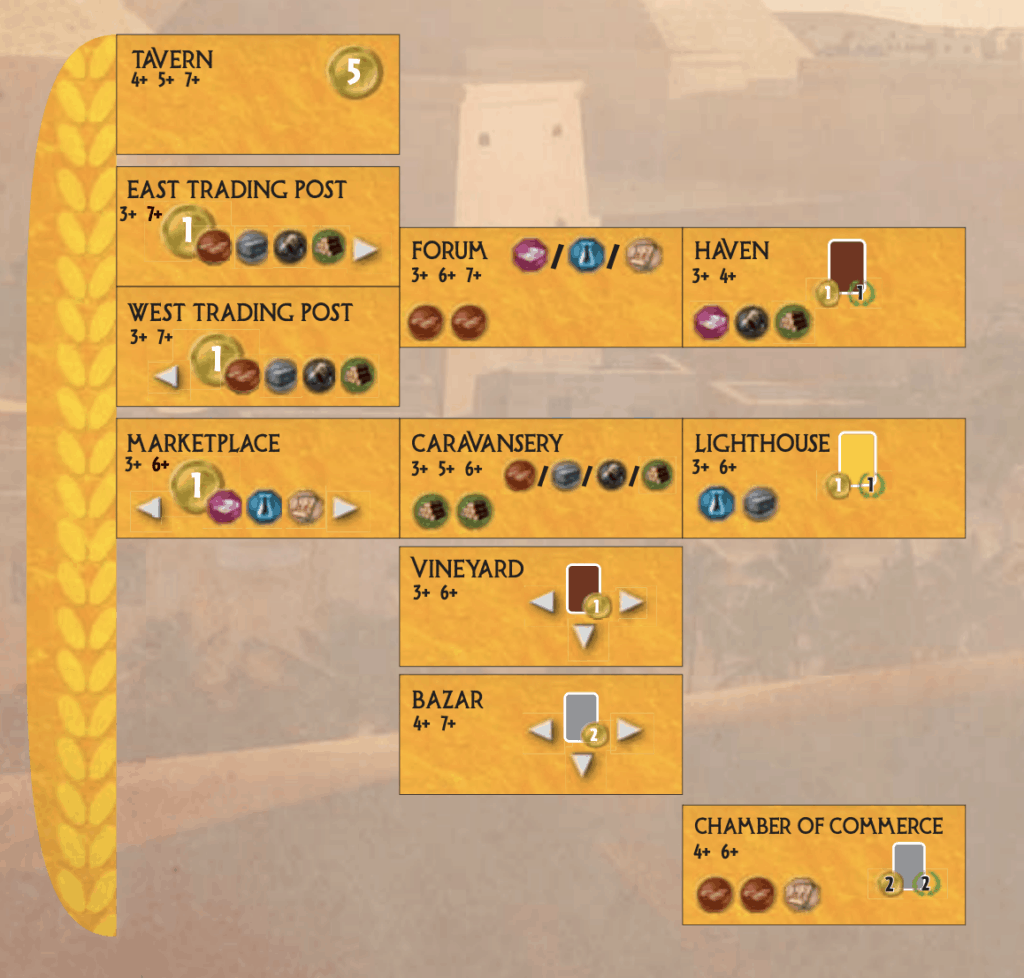
Trading Posts
The trading posts are situationally very good when they’re pointed to a player who is heavy on resources. If a player has 2 of the 4 resources, I’m not unhappy to take it though, especially if those resources are stone or bricks (which appear in multiples most often). This card also lets you get a free forum, which is fantastic.
Marketplace
The marketplace is similar to the trading post, but more situational. It’s safe to point one at the player going for green cards, and anyone who already has the resources you want, but don’t take it on speculation. It’s so easy to make this into a dead pick.
Tavern
The tavern is a consolation prize for players with nothing better to take. It’s pretty bad. It’s alright to take it earlier if you’re trying to build a wonder stage quick for some reason or if you have a trading post pointed at a neighbor with everything you want, but in general, this card is a last-pick type card.
The Forum
The forum is an excellent card, unless you already have access to these resources, as getting multiples of manufactured goods isn’t super relevant for any strategy, save a few wonders.
The Caravansary
This card is great, especially for those with wonders that require 3-4 of a single good. This card is worth planning on having two wood when going into age 2.
The Vineyard, Bazaar, Haven, and Lighthouse
These are all weak consultation prizes, similar to the tavern. Even if you get 9-10 coins from these, you won’t be getting many points. Occasionally the third age cards will be worthwhile, but don’t count on it, and don’t build for it either. You’d have better luck elsewhere.
Chamber of Commerce
This card, however, is great. The player drafting science will often want to take it. Three manufactured good cards make this worth 8 points, which is a great card in the third age.
Arena

The Arena is also pretty great, if you’ve build your wonder, and especially if you’re on the B side of Gizah.
Wonders
In 7 Wonders, there is a bit of finesse as to when to build each wonder:
- When nothing in your hand is any good.
- When you want to deny an opponent a card.
- When in doubt, buy it early, as you’ll want to build your wonder as fast as possible, as the earlier you build it, the more points you get (relative to what you’re expected to score in that age).
The Temple of Zeus at Olympia
On the A side of the temple, it gives you the ability to play a card for free each age. Just remember that its usually best to pop this ability as soon as you can in an age, as your options will generally only get worse the longer you wait. However, in the third age, if you can afford to pay gold for a card, pay gold instead. And hopefully, you’ll get passed something you’ll want to use this power on later in the round.
As a side note, some people take fewer resources to make sure their power to get free buildings good. That is largely a trap. You’ll get to use it anyways, and you just have to hope it does more than just save you a few gold.
The B side is completely different.
In general, in a 3 player game, the B side is fantastic. There are simply more guilds in a three player game than in a seven player game (In a three player game, there are 2 guilds per player, but in a seven player game, there is only 1 guild per player). The more guilds your neighbors have, the more powerful the copying action is. If your neighbors don’t build a guild worth more than the cards in each of your hands, don’t build it.
The trading post can be quite good too, but it is situational. You’ll always want to build it, but be prepared for it to burn you a bit if the variables don’t line up, especially at a bigger player count.
The Pyramids at Gizah
Gizah takes so many resources of so many different types, your primary goal in the first two ages ought to be to find the resources you need to finish your wonder, even taking your last stage in consideration. This wonder is worth a ton of points, but it has the downside of costing you a ton of picks on resources.
The way the game should play out is that you take what you need to build Gizah, then get a lot of money from opponents who want your stone and wood (and bricks if you’re playing B side), then you immediately spend that money on absolutely every other resource (which you probably won’t end up getting yourself). That’s fine though, that’s how this wonder is balanced.
Gizah pairs well with a Civilization centric strategy, or a military centric one.
The Colossus of Rhodes
The Colossus is really quite simple. Build it. Win military victories. Don’t not win the military victories, as you really need those. Playing catchup is a bad option. Taking military early, and building your wonder ought to be enough to discourage your opponents from trying to compete with you in military.
One interesting thing to note about the Colossus of Rhodes is that (especially in a three player game) it’s quite easy for an opponent to deny you enough resources to finish building it. Four ore is actually massively difficult, and nothing else in the game requires more than two ore (with the sole exception of an age three military card that takes 3 ore). So if your neighbors have built any ore at all, that saves you the hassle of having to build that yourself (as you don’t really want 4 ore–you just want access to the final stage of your wonder). But play expecting to take every bit of ore you see, and expect an experienced opponent to sabotage your efforts by burying the ore under a wonder.
The Hanging Gardens of Babylon
The path forward for Babylon seems quite straight forward: you want to build science. But keep in mind, your opponents expect you to go for science and may even start hate-drafting science cards before you even take a single science card yourself.
If you’re playing on the B side, you don’t need to build your wonder’s third stage, and even on the A stage, if you don’t think you can make science work, you don’t have to build the final two stages, but be flexible and play to your strengths.
An interesting strategy is to rush the second stage of the wonder on the B side, so you can take 3 extra cards with it. Worst case scenario, it gives you 3 gold at the end of the first age to spend. Best case, you get to build three more cards than your opponents, and all 3 end up being excellent.
The Mausoleum at Halikarnassos
The Mausoleum starts with textile, which makes it a strong candidate to go for science cards. Not only that, but when you have a science card that you want, but can’t yet afford, you can discard it for money to guarantee that you get it at the end of the round. This is especially good for the Gear science card, the rarest one in most games.
Using the Mausoleum’s abilities is a tricky one, especially on side B, and you shouldn’t feel compelled to use complete it if you think you have a better scoring card in hand. It’s tricky because the cards that are discarded often aren’t great, and using its power feels like a scramble for whatever can work. But more than any other wonder, this one rewards you for memory, and your ability to guess what each player will take. If you assume a military card is getting discarded in age 1, take a military card under the assumption that you’ll get your second one from the discard pile.
Ephesus
Ephesus is also a strong candidate to go for science, since it starts with papyrus. Especially the B side, since it needs all 3 manufactured goods in order to build the final stage of its wonder.
The power of this wonder is going lean on resources. You build very few yourself, and hope to buy everything from your opponents. Trading posts are pretty awesome for Ephesus for this reason.
The wonder scores slightly fewer points than the others do, but it makes up for it in allowing you to building way fewer resources yourself, and every resource you don’t take is another point-scoring card you can take. This is another incentive to go for science, as getting a few good coupons will make resources feel nearly irrelevant and help your money go even further.
The Lighthouse at Alexandria
Starting with glass suggests that Alexandria should be good at building science but its actually terrible. Why? Alexandria gives you extra resources. What don’t you need when you’re going full science? Extra resources.
Instead, Alexandria is at its best when it’s building military and civilian.
Victory Points
A drafting game is won by the person who takes cards worth the most points. Sometimes a baseline number of points can be hard to figure out, but its pretty easy to calculate in 7 Wonders.
But as a threshold to measure your choices against, here are the average number of points you can expect to score per non-resource, non-yellow card in the game in each age.
Average Number of Points per Card
| Age | Average # of Points/card* |
| 1st | 2.5 |
| 2nd | 4 |
| 3rd | 6.5 |
* See Footnote for how this was calculated
This was calculated by the average of the blue cards in a 7 player game for that age–it makes sense to use blue cards as the threshold for what a card should score as that will always be an available scoring option you have. The whole reason to go for science or military over civilization cards is the chance to score higher than civilization cards. Both of those options are risky, so the reward has to be worthwhile.
You might be familiar with using Gizah (side A) as the threshold for what a good turn is (3 points in the first age, 5 in the second, and 7 in the third), but that overestimates how high you can score (by a lot) I’ve found. Winning all 3 ages in military against both opponents scores under the Gizah threshold (except in a 3 player game), and 3 full sets of science cards (9 cards, 3 of each symbol) barely beats it, even though completing 3 sets of science is probably going to win you the game. Going for Civ cards will will almost never beat the Gizah threshold either, so its really much closer to a maximum, which actually isn’t useful to guide your decisions.
This bench mark is a good way to compare your scoring cards. Another benchmark to consider is how many points you should aim to get each round to hit the above threshold (remembering that everyone needs to take some non-scoring resource cards too).
- 5-7.5 points in the first age, with about 2-3 scoring cards (I consider red, green, and blue cards “scoring cards”).
- 12 points in the second age: expect to take around 3 scoring cards (more if you took more resources in the first age, less if you still need more resources).
- 39 points in the third age, all 6 cards should score (gold cards count as scoring in this round too).
If you add all that up, you get 58. 58 is a very good score, but it’s also a very obtainable one. If you get 58 points, it means you probably didn’t waste any picks, and everything went as well as it could have.
Not to say 58 is some magic number, its just a guide. Games often score far lower than that, and sometimes especially co-operative games score a fair bit higher. Don’t compare your scores to the number, just think about each age’s points as you’re playing.
In the third age, you just take whatever card is worth the most points, or prevents your opponents from getting the most points. Generally hate drafting in the third round is pretty bad in a game with more players, while it’s much better in a 3 player game. Typically though, you’ll just add up how much each card is worth points wise, add up how much each card is worth to your opponents, and take the one that scores you the most net points.
Evaluating your plays
To calculate if your card choices scored above or below average (useful to compare different types of cards or evaluate your decisions between games), count the number of cards you’re comparing in the first age, multiply it by 2.5 (the average value of an age 1 card, see chart above), count the number of cards in the second age and multiply it by 4, and multiply the number of third age cards by 6.5. If the actual number of points the cards you’re comparing scores less than that sum, then the play was below average. If its higher, then it was a good play.
For example, if you decided to go after science in the second age of a game, but you didn’t know if it was worthwhile. You hadn’t taken any science in the first age, and you got six science cards in the next two ages: three in the second age and three in the third age too, ending with two cards with each symbol (26 points). You did about as well as you could have, all things considered. This is how you can calculate if that play is worthwhile.
(3 * 4) + (3 * 6.5) = 31.5 = points expected for this play if all 6 cards had been blue
31.5 is higher than the 26 points you got, so its not a great play. But if you got one of the 3rd age cards in the first age instead, the expected points goes down to 27.5, which makes that play pretty good, since our calculated score is only just above the actual point value.
Sometimes all your choices, are below average though, so don’t expect to always beat it. And sometimes, you learn you can regularly score about the threshold. That’s okay, as long as you know how much you can get above, the threshold is still useful.
Where Can I learn more 7 Wonders Strategy?
The Wonderful Plays Youtube Channel is a fairly unknown channel, but it has some very insightful commentary on 7 Wonders Strategy. Here is a video review of an online 7 Wonders Tournament from that channel.
And if you’re very serious about 7 Wonders, specifically for 3 player play, you can read the 167 page strategy guide by Board Game Area’s Pistolero, the second highest ranked player on the site.
One aspect of 7 Wonders strategy I barely touched on was knowing how the distribution of cards changes as player count changes. If that sounds like your jam, BGG user Red Porper wrote half a novel about that aspect of 7 Wonders Strategy.
If you’re looking to get better at the game, playing on Board Game Arena is going to be key to get good practice in against strong players. It ranks players, so you can get an idea of how competitive you truly are.
And finally, if you want a place to discuss this game’s strategy further, come join my Discord channel and I’d be happy to talk strategy any time. Maybe you have some insights into how version 2 of this guide can get a little better? Maybe you have some questions?
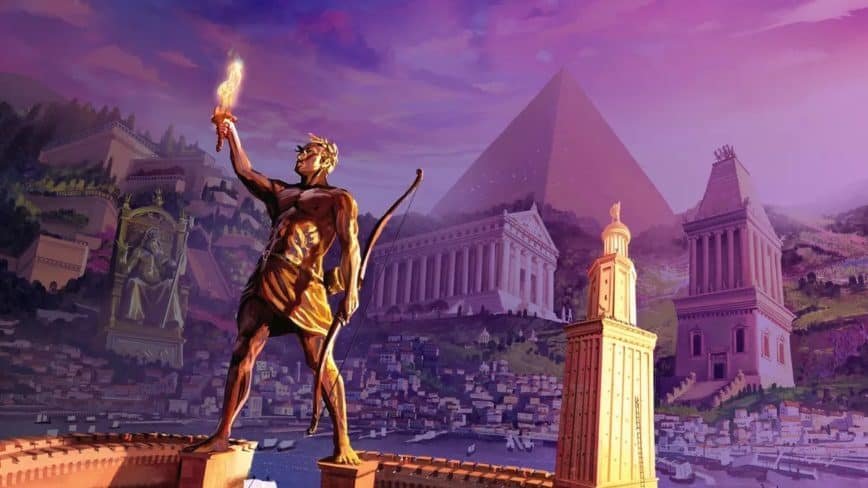

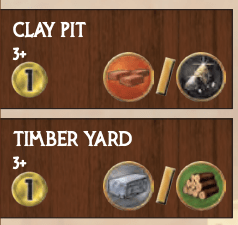

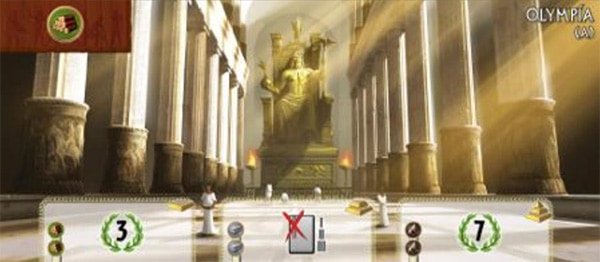
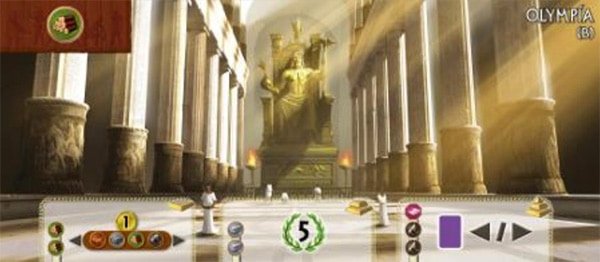
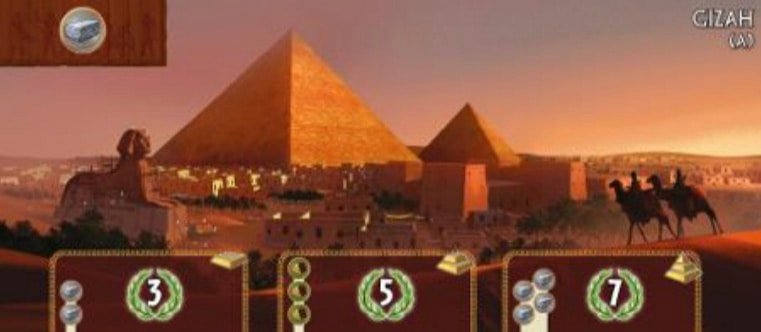
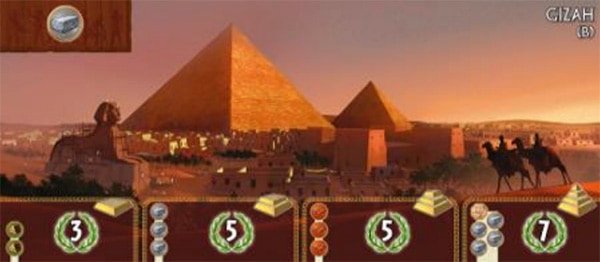
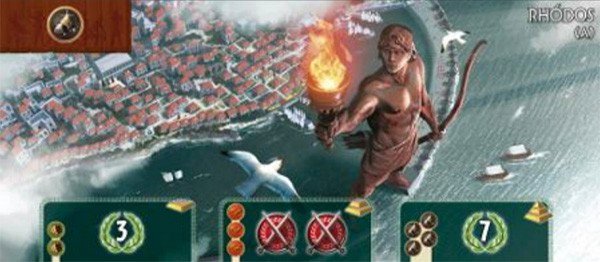
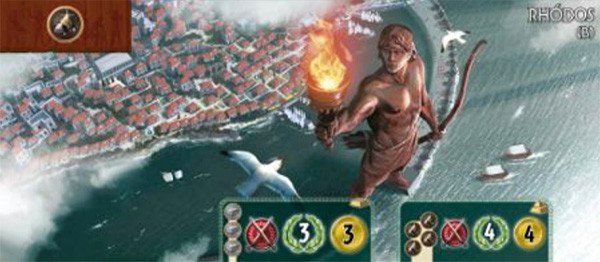
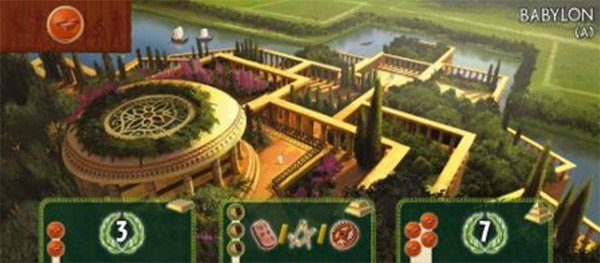

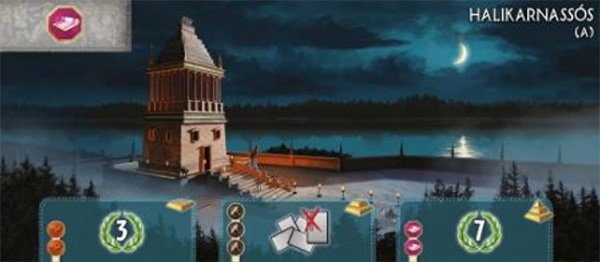
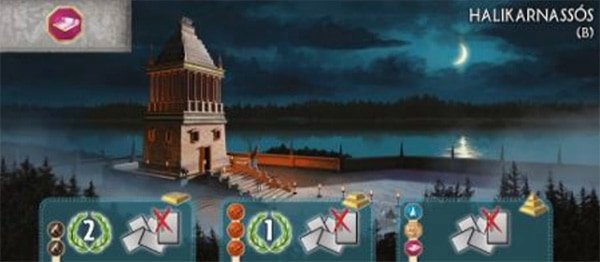
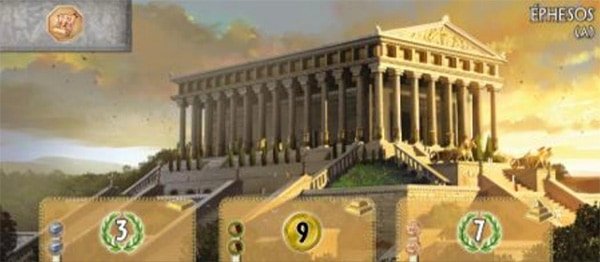
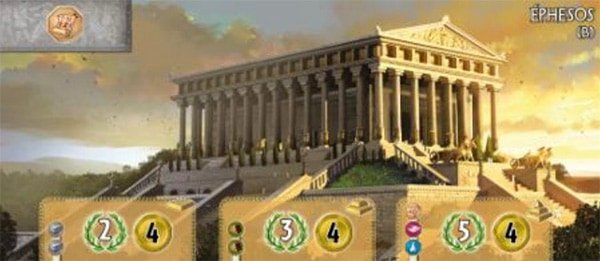
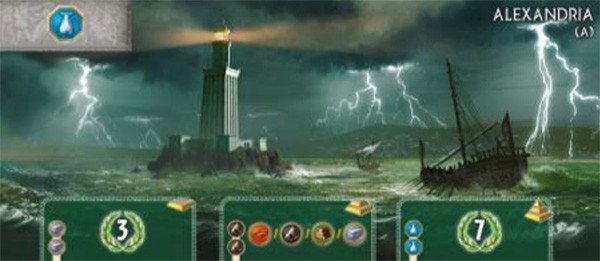
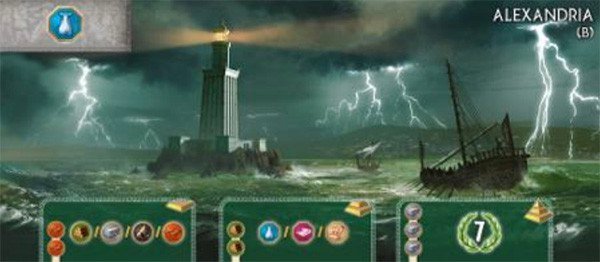
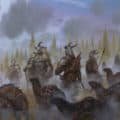

Great work!
I am told the discord link is invalid and I can’t join. Help please? 🙂
Here, try this link. https://discord.gg/yNCyScf
Yes. Good strategy tips. I agree with mostly everything.
1. Which player I should buy resources from? I always buy from the player with the lowest victory points. I play on the mobile app do I can easily see that.
2. I think blue cards is a great strategy. Going all out on them can earn you lots of points.
3. Tavern is a good card. You get 5 coins instead of 3 for discarding it.
Have you tried playing two players with the free city. I’ve heard it’s really good.
Thanks!
1. The difference between 4 and 6 gold is so much bigger than the difference between 0 to 2 gold that I’ll almost always buy from the richer player unless I’m sure the poorer player isn’t going to catch up. I will buy from the player with fewer points in the third age though, but not until the third age, where coins are typically pretty easy to come by.
2. Going all out on blue is hard, since every player can pick the blue cards, especially in the third age where they’re often just the best cards. If you get cut off blue cards, it’s really your only way to score, and strong players loosing to a blue strategy will pick blue cards higher than usual, so it’s likely that happens.
3. Yeah, I’ve been liking it more and more, especially if you can get a trading post.